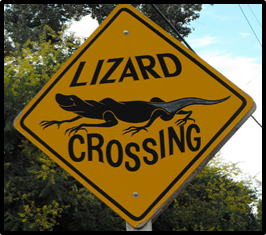
At Creative Services, we haven’t forgotten. As anyone involved with lawyer advertising should, we’re constantly refining our understanding of this psychology. The tricky part, however, is implementation—understanding where the rubber (or the reptile) meets the road.
Let’s explore some of the wisdom we at cj have gained over the last few years.
Know your audience.
Marketers often talk about waking up the reptilian brain—using triggers to turn a passive audience member into an active participant. But there’s a difference between a jury member, a TV viewer, and an accident victim. Juries and TV viewers are naturally passive and disengaged, while an accident victim is definitely an “active participant.” Because of their injury, their reptilian brain is WIDE awake.
Ancillary messages like lawsuits improve safety or siding with the plaintiff sends a strong message, while wonderful for a closing argument, a tort-reform rebuttal, or an image commercial, are somewhat wasted in a direct-response ad. Injured people don’t need to see a full spot about how their lawsuit will help society. They need to hear how a good settlement will help THEM (with maybe just a kicker about society). Just like there are no atheists in a foxhole, there are no tort reformists in a car accident!
How do we know? We’ve tried varying doses of reptilian language in our marketing campaigns. When we track the best performers, the primary do-or-die triggers seem to rise to the top. Messages like fear of loss, compensation you need, scarcity of time, and mobility hit much closer to home.
Codes are not copy points.
Much of Rapaille’s work centers around codes, the mental relationships we humans have with certain experiences. These experiences can be products like coffee, beer, or guns; or they can be concepts like family, quality, or lawsuit. The codes are merely labels for the imprinted ways we connect with these experiences. They are NOT meant to be talking points that can be cut and pasted directly into ad copy.
Your communication with your consumers has to flow, make sense, and relate. Jamming some of Rapaille’s code words like “opportunity,” “proof,” and “mobility” into a script will not magically produce results. In fact, it may just confuse your audience.
Don’t force it.
Beginning a creative endeavor with the mission of “I’m going to make this reptilian” seldom yields the desired results. We have found that when we just focus on developing a good idea into a clear message, we’ll spot an opportunity or two to insert a reptilian element along the way.
Thanks for reading. I’ll leave you with a few codes discussed by Dr. Rapaille that we’ve found to be most applicable to personal injury law advertising.
- Car = IDENTITY
- Health & Wellness = MOVEMENT
- Injury = IMMOBILITY
- Nurse = MOTHER
- Hospital = PROCESSING PLANT
- Home = RE
- Work = WHO YOU ARE
- Money = PROOF
- Quality = IT WORKS
- Trial = OPPORTUNITY
Got any more? Post them in the comments section.
At Creative Services, we’re always embracing new paradigms through which to view our advertising. Still, we find that even new approaches have a strong reptilian component. As Dr. Rapaille would say, “the reptile always wins.”
Photo credit: Stronglight


